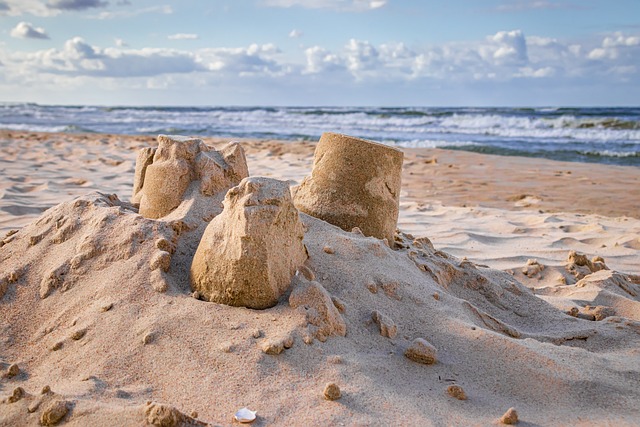If you are considering using play sand as a substrate for your reptile pet, there are a few factors to consider. Play sand is becoming increasingly popular among lizard owners due to its cost-effectiveness and ease of use. However, there are both advantages and disadvantages to using play sand, so let’s take a deeper look into this option.
Can you use play sand for lizards?
Play sand can be a practical and low-cost option for lizards as a substrate. However, it is not the best choice.
Play sand lacks the nutrients that lizards need in other quality substrates, such as calcium and protein.
Additionally, play sand does not aid in maintaining humidity levels, which are necessary for some species of lizard to keep healthy.
Considering these factors, it may be better to opt for other options like coconut coir or soil mixes with additives.
Doing so will provide your lizard with a better environment and allow you to rest easy, knowing its needs are being met.
Pros of Play Sand
The most significant advantage of using play sand is the lower cost compared to other substrates on the market.
Play sand can be easily purchased from any hardware store or home improvement center.
Another benefit is that it is easier to clean than other types of substrate – such as coconut fibers – requiring more maintenance to keep them free from harmful bacteria and parasites.
Cons of Play Sand
The most significant disadvantage of play sand is that it does not retain moisture very well, which can be an issue for lizards who need a specific humidity level in their enclosure to stay healthy.
Additionally, play sand can be harder on their skin than other substrate types, which may lead to irritation.
Finally, play sand can contain dangerous toxins that can harm your pet reptile if not properly cleaned or maintained.
Are there different types of play sand?
Play sand is an increasingly popular product for children’s play areas, providing a soft medium for them to build and play.
This type of sand offers a variety of options, allowing it to be tailored to the particular needs of any given activity or age group.
Different types of play sand have visual and tactile differences that can set them apart, such as color and size.
Some are specifically formulated with materials that make them hypoallergenic or more resilient in outdoor applications.
Ultimately, selecting the correct type of play sand requires knowledge of each option’s specific characteristics to ensure proper suitability for its intended use.
How to prepare play sand for lizards
Preparing play sand for lizards is a relatively straightforward process requiring only a few items and patience.
The best type of play sand for lizards is organic, non-toxic sandbox sand, as it is safe to swallow and won’t irritate or harm reptile skin.
To prepare the sand for usage, sprinkle water on the surface until it’s damp and occasionally mix it up with your hands.
As the water evaporates, you can repeat this process until the sand reaches a clumpy but dry consistency.
After this step is completed, siphon out any remaining dust particles that remain by dragging a clean sieve through the pile; be sure to discard those particles once they have been filtered out.
Once setup is finished, your lizard should be able to enjoy hours of exploration in its new play set.
Where to buy play sand for lizards
Play sand is ideal if you’re looking for a safe and comfortable substrate for your lizards to live on.
It’s an inexpensive yet high-quality product that works great as a primary or secondary substrate.
Always buy from reputable retailers to guarantee natural color and texture.
You can purchase play sand from pet suppliers, garden centers, home improvement stores, bulk sand distributors, or other specialty sites.
Look for natural silica-free sand labeled “play sand” or “all-purpose sand” to ensure you buy the right product.
If you have questions about safe play sand for lizards, don’t hesitate to ask a lizard expert before purchasing.
Conclusion
In conclusion, while there are pros and cons associated with using play sand as a substrate for lizards, it ultimately depends on the species of lizard you have and their individual needs when deciding what type of substrate would work best for them.
If you are looking for something less expensive than other options on the market but still provides excellent drainage, then play sand might be an ideal choice for your pet reptile’s enclosure. However, it is essential to ensure that you clean the substrate regularly and check for any signs of irritation or distress in your pet lizard before making your final decision.




